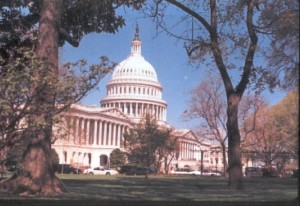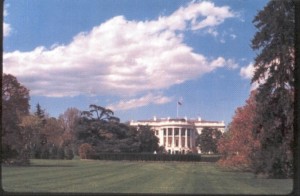Experts have recognized for two decades that funding of federal programs intended to prevent or respond to introductions of invasive species is inadequate. As regards tree-killing insects and pathogens, there have been spikes in the past, spurred by, first, detection of Asian longhorned beetle and emerald ash borer, then by federal spending increases to support recovery from the Great Recession.
But with renewed pressure to reduce the federal budget, programs operated by APHIS and the USDA Forest Service have suffered significant cuts in spending. For a history of these cuts, read Chapter 3 in Fading Forests III .
Funding for key programs continue. Most alarming is that these cuts are suggested by the Administration! in its annual budget sent to Congress. I don’t know whether the cuts are suggested by the agencies, or instead are imposed by higher-ups in the Department of Agriculture or at the President’s Office of Management and Budget.
Certainly there is competition for the available funds. APHIS is funded by the Agriculture Appropriations bill, which also funds agriculture programs that enjoy strong lobbying support as well as food stamps. The Forest Service is being squeezed by the ever-higher costs of managing wildfires.
Still, these cuts threaten to expose our wildland, rural, and urban forests to permanent destruction by non-native, tree-killing insects and pathogens.
Congress determines the final funding levels through the appropriations process.
 Members of Congress work for us!!
Members of Congress work for us!!
Ask your member of Congress & senators to support adequate funding for APHIS & USFS programs that counter invasive, non-native tree-killing pests.
Congress’ actions are at the following stage as of the third week in July:
APHIS
The House Subcommittee on Agricultural Appropriations bill had cut funding for “tree and wood pest” group – although the bill did increase funding for the “specialty crops” program.
In both cases, groups with which I work had asked to maintain the FY15 level.
The Senate bill, adopted by the full Appropriations Committee on 16 July, has restored funding to the “tree and wood pest” line! Possibly because of this increase, it holds the “specialty crops” program funding to the FY15 level.
Funding specifics:
HOUSE Agriculture appropriations bill maintains overall funding for APHIS at the FY15 level ($871 million). This is $15 million above the President’s request in his budget; and about the same as the level of funding for the current fiscal year (FY 2015). Within this amount, the following is allocated to programs that address tree-killing pests:
- $158,000,000, to remain available until expended, for specialty crop pests
(a very small proportion of this account, about $5 million, goes to sudden oak death management)
- $45,500,000, to remain available until expended, for tree and wood pests (e.g., ALB, EAB)
SENATE Agriculture appropriations bill raised overall funding for APHIS to $876 M — $20 million above the President’s budget request and $5 M above both the current year and House level. Within this amount, the following is allocated to programs that address for tree-killing pests:
- $156,000,000, to remain available until expended, for specialty crop pests
- $54,000,000, to remain available until expended, for tree and wood pests
As I said above, it is disturbing that these programs do not enjoy sufficient support within the Administration. We all need to increase our lobbying of USDA – both at the APHIS level and above; and at OMB.
USDA Forest Service
Both the House and Senate Interior Appropriations subcommittee bills cut USFS funding for both research and forest health management.
The House interior appropriations bill provides only $207 million for research other than Forest Inventory and Assessment. The Senate interior appropriations bill provides $211 million for research other than FIA. Both figures are below the $220 million allocated for the current year (FY2015) and higher levels in previous years.
The House bill provides only $99 million for forest health management (on both federal and non-federal or “coop” lands). The Senate bill provides $100.7 million. Again, both figures are below the $104.6 million provided in FY15 and higher levels in previous years.
Funding for all USFS programs is under extreme pressure by the growing cost of fighting wildfires. Until this problem is resolved, it will be extremely difficult to obtain additional funds for other programs – even in the face of rising numbers of tree-killing pests across the country. There are also questions within OMB and among some advocacy groups about whether the USFS should assist states and cities in containing tree-killing pests. Some argue that the USFS should confine its efforts to pests that are attacking trees in National forests. My reply: if you wait for ALB or other pests to reach National forests before responding, you have thrown away any chance of containing the outbreak.

